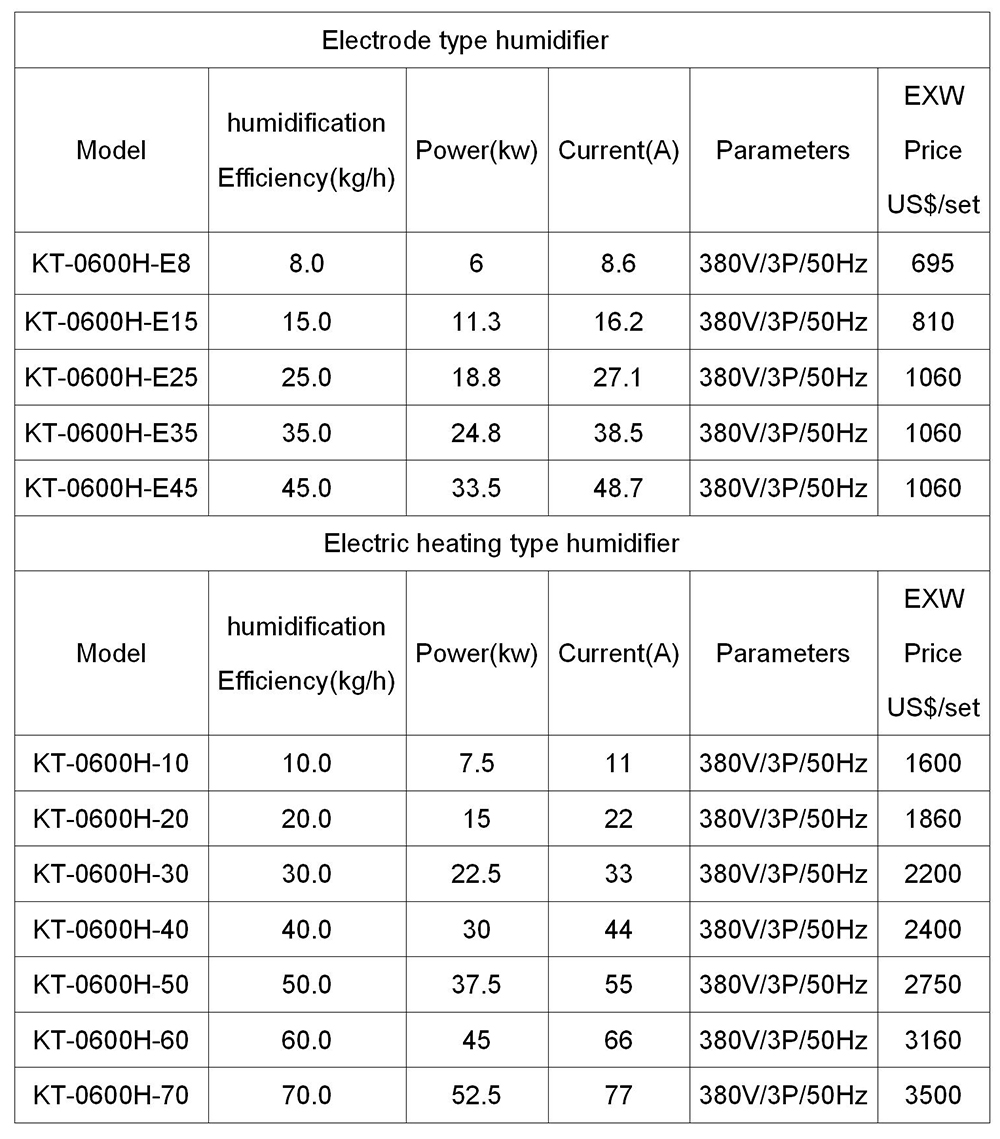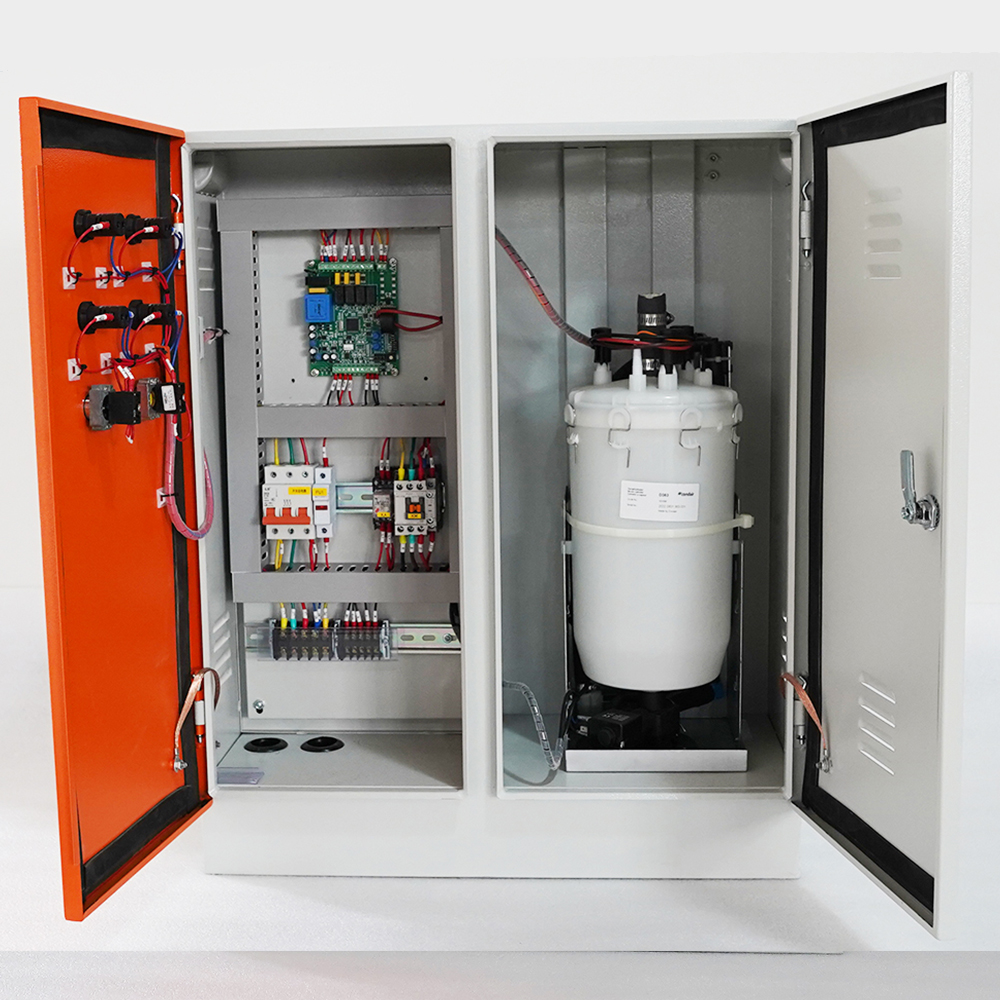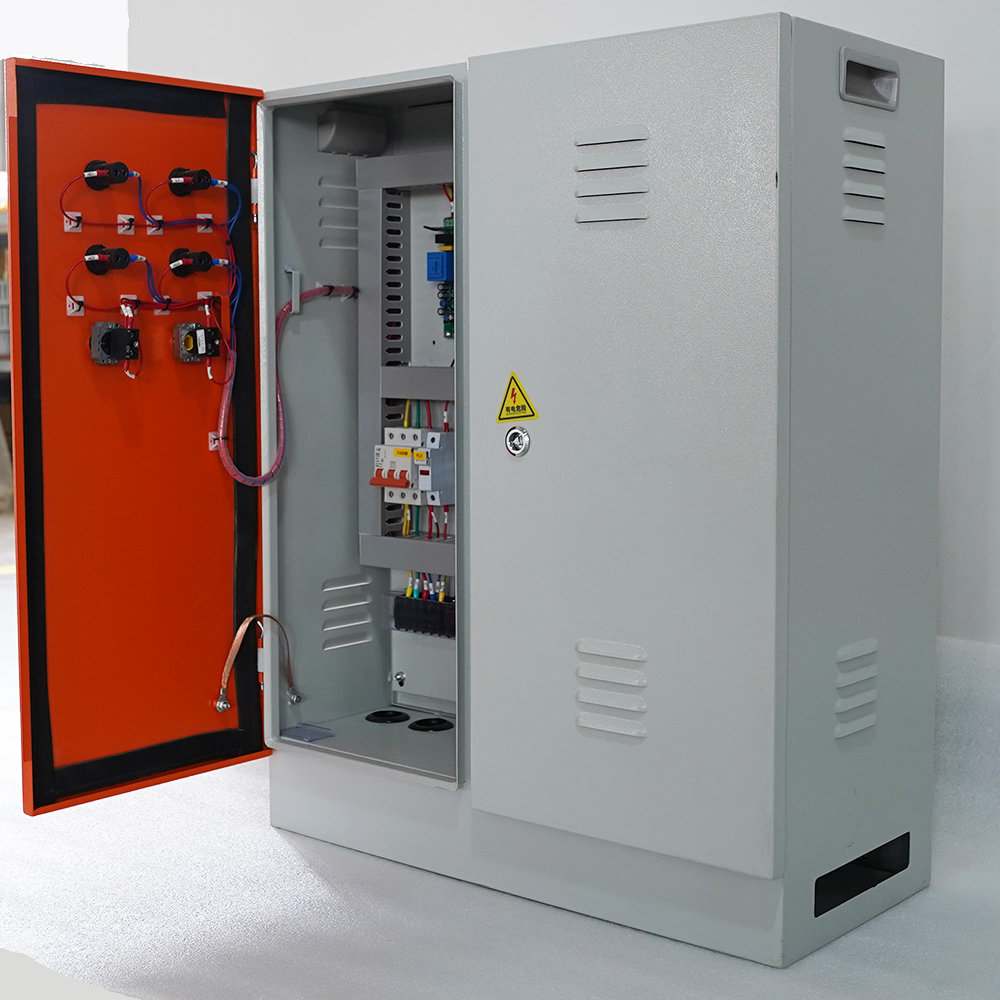Product Description:

FAQ:
Industrial humidifiers are used to increase the moisture content in the air within industrial settings. They are crucial in industries such as manufacturing (e.g., textiles, woodworking, electronics), where proper humidity levels can prevent product defects, reduce static electricity, and improve the overall quality of the production process. In addition, they are used in storage facilities to protect stored goods from damage due to dry air, and in some industrial work environments to enhance worker comfort and productivity.
Industrial humidifiers are designed to handle much larger spaces and more demanding applications compared to residential ones. They have higher humidification capacities, often measured in pounds or kilograms of water vapor output per hour. Industrial models are built to be more robust and durable, with heavy - duty components to withstand continuous operation in industrial settings. They also may come with more advanced control systems, such as remote monitoring and automated humidity adjustment based on industrial - specific requirements.
-
Steam Humidifiers: These work by boiling water to produce steam, which is then released into the air. They are highly efficient and can quickly increase humidity levels. Steam humidifiers are often used in environments where precise humidity control is critical, like in pharmaceutical manufacturing.
-
Ultrasonic Humidifiers: They use high - frequency vibrations to break water into fine droplets, which are then dispersed into the air. Ultrasonic humidifiers are energy - efficient and relatively quiet. They are suitable for a wide range of industrial applications, including some food processing facilities.
-
Evaporative Humidifiers: These humidifiers work by passing air over a wet surface, such as a wick or a filter. As the air moves over the wet surface, water evaporates into the air, increasing humidity. Evaporative humidifiers are cost - effective and are commonly used in less - sensitive industrial areas like general storage warehouses.
The choice depends on several factors. If you need very precise humidity control and can afford the higher energy consumption, a steam humidifier may be ideal. For applications where energy efficiency and quiet operation are important, and the environment is not overly sensitive to the method of humidification, an ultrasonic humidifier could be a good option. In large, less - controlled spaces where cost - effectiveness is a priority, an evaporative humidifier is often a suitable choice. It's also important to consider factors such as the type of industry (e.g., food - related industries may have specific hygiene requirements that could rule out certain types) and the size of the area to be humidified.
In most cases, it is highly recommended to have a professional install an industrial humidifier. Professional installers have the knowledge and experience to ensure that the humidifier is correctly sized for the space, properly connected to water and power sources (if applicable), and set up with the appropriate controls. Incorrect installation can lead to issues such as improper humidification, water leaks, or electrical problems, which can be costly to fix and may even pose safety risks.
The installation time can vary widely depending on the type of humidifier, the complexity of the installation (e.g., whether it requires new plumbing or electrical work), and the size of the area where it will be installed. A simple evaporative humidifier in a small industrial space may take only a few hours to install, while a large - scale steam humidifier in a multi - level manufacturing plant with complex plumbing and electrical requirements could take several days.
Most industrial humidifiers come with user - friendly control panels. To operate, first ensure that the unit is properly connected to power and water (if applicable). Then, set the desired humidity level using the control panel. Some advanced models may also allow you to set additional parameters such as fan speed (in the case of evaporative humidifiers). Once set, the humidifier will automatically turn on and off as needed to maintain the set humidity level. It's important to regularly check the water level in units that require manual refilling (such as some ultrasonic and evaporative humidifiers) and to monitor the overall performance of the unit.
-
Regular Cleaning: All types of industrial humidifiers need to be cleaned regularly to prevent the growth of mold, bacteria, and scale. The frequency of cleaning depends on the type of humidifier and the operating environment. For example, steam humidifiers may need to be descaled more frequently to prevent mineral buildup. Ultrasonic and evaporative humidifiers should have their water tanks, filters, and other components cleaned according to the manufacturer's instructions.
-
Filter Replacement: Evaporative humidifiers, in particular, require regular filter replacement. The filter helps to remove impurities from the water and also aids in the evaporation process. Over time, the filter can become clogged, reducing the efficiency of the humidifier. Replace the filter as recommended by the manufacturer, usually every few months depending on usage.
-
Inspection of Components: Periodically inspect all components of the humidifier, including hoses, nozzles, and electrical connections. Look for signs of wear, leaks, or damage. Any issues should be addressed promptly to prevent further problems and ensure the continued safe and efficient operation of the humidifier.
-
Proper Sizing: Ensure that the humidifier is correctly sized for the space it is intended to humidify. An undersized humidifier will not be able to maintain the desired humidity level, while an oversized one may cause over - humidification and potential damage to the environment and products.
-
Regular Maintenance: As mentioned above, regular cleaning, filter replacement, and component inspection are essential for optimal performance. A well - maintained humidifier will operate more efficiently and effectively.
-
Monitoring and Adjustment: Continuously monitor the humidity levels in the area using a reliable hygrometer. If necessary, adjust the settings of the humidifier to maintain the desired humidity range.
-
Type of Humidifier: Steam humidifiers generally consume more energy as they need to heat water to produce steam. Ultrasonic and evaporative humidifiers are typically more energy - efficient. However, the actual energy consumption also depends on factors like the size of the unit and its operating time.
-
Operating Conditions: The humidity level set, the ambient temperature, and the air circulation in the area can all affect energy efficiency. For example, if the set humidity level is much higher than the ambient humidity, the humidifier will need to work harder and consume more energy. Poor air circulation can also make it more difficult for the humidifier to distribute moisture evenly, potentially leading to longer operating times and higher energy use.
-
Clogged Components: In evaporative and ultrasonic humidifiers, clogged filters, nozzles, or water passages can prevent the proper dispersion of water vapor. In steam humidifiers, a buildup of scale in the heating element or pipes can reduce steam production.
-
Incorrect Sizing: If the humidifier is undersized for the space, it will not be able to meet the humidity requirements.
-
Low Water Level: In units that rely on a water supply, a low water level can cause reduced humidification. Check the water tank or supply line to ensure an adequate water source.
-
Malfunctioning Components: Faulty sensors, fans, or heating elements (in the case of steam humidifiers) can also lead to reduced performance.
Strange noises can indicate several issues. In evaporative humidifiers, a noisy fan may be due to a build - up of dirt or a misaligned fan blade. Ultrasonic humidifiers may make unusual noises if the vibrating element is damaged. In steam humidifiers, knocking or hissing noises could be a sign of a problem with the steam generation or distribution system. First, turn off the humidifier and visually inspect for any obvious signs of damage or blockages. If you cannot identify the problem, contact a professional technician for further inspection and repair.





